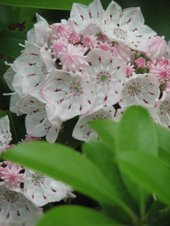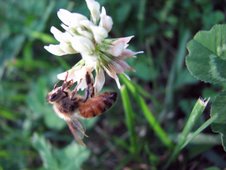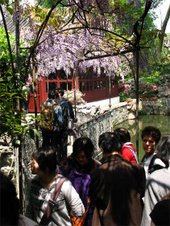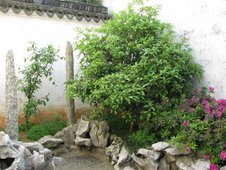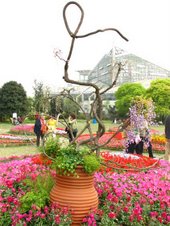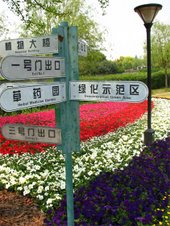Surrounded by carnivorous eating plants was not a situation I’ve experienced in my past visits to the wine district of Northern California. In mid February I traveled to the Russian River area of Sonoma County to explore a few of the less well known gardens and parks.
First I visited the Sonoma Horticulture Nursery, which specializes in rhododendrons and azaleas, along with a wide selection of shade-loving trees, shrubs and perennials. The eight plus acres of nursery and gardens are open all year to visitors. Azaleas and rhododendrons cover the hills which surrounded a shaded pond. The azaleas were beginning to bloom and I was tempted to purchase several. The owner Polo bought this nursery in 1976. He is proudly showed off a few of his 20 to 30 varieties of magnolias and his swamp garden with weird Cypress knees rising out of the muck. <http://www.sonomahort.com/>
I lunched in the secret garden patio at the back of the Mosaic Restaurant(http://www.mosaiceats.co/). Enjoying creatively prepared vegetables gathered from the owner’s garden and other local farms.
Not far away is the Armstrong Woods State Reserve(http://www.parks.ca.gov/) with hiking and driving paths through majestic redwoods. Check out the 1400 year old redwood “Colonel Armstrong”. I was sorry to miss the rare Calypso orchids which were not yet in bloom. Also I did not have time to visit the coast which was ablaze with masses of blue irises.
In Sonoma County it is impossible to escape the rolling hills crisscrossed by rows of vines. In the spring the mustard plants add a golden swath between the vines. Many wineries have developed gardens with plants and herbs that match their wine varieties. In these gardens you are encouraged to walk with glass of wine in hand and taste the plants matching the taste and smell of their wines with certain herbs..
Some wineries have elaborate gardens which are used for wedding and events; others offer quiet maze like paths. Kendall Jackson Wine Center has an educational herb garden and Korbel is known for its rose garden.
Russian River resorts also offer delightful gardens and unusual plants. I stayed at the “green” Creekside Inn & Resort which is surrounded by redwoods (one a rare albino) and is near the Russian River. Lynn and her handsome sons are knowledgeable about the area and created delicious breakfasts and snacks. Their cabins, one-bedroom apartments, units, and bed & breakfast rooms are environmentally friendly. Their cottages are wheelchair and dog friendly.
The Sonoma Orchid Inn, a 1906 farmhouse bed & breakfast inn is owned and run by Brian and Dana who are avid orchid collectors. Orchids are displayed through out the Inn and their greenhouse displays their award winning rare species including their own hybrids.
The Village Inn & Restaurant(http://www.villageinn-ca.com/) was custom built in 1906 as a private vacation home. The lovely landscaped gardens offer views of Russian River wildlife and mountains. Their restaurant offers Classic American cuisine created with fresh seasonal ingredients from their organic herb garden and local Sonoma farms.
Returning to Virginia I bought a Venus fly trap at a garden show. In California I had learned form Peter, the owner of California Carnivores, that most insect-eating plants are local to the wetlands of the east coast from Canada to Florida. Since the wetlands have been drained; only small protected areas still support these plants. I have visions of restoring a river bank and small bog behind my house with these plants. If you are interested in these sci-fi type plants; visit his store in Sebastopol or buy one of his books.
Sunday, May 4, 2008
Subscribe to:
Posts (Atom)






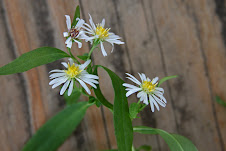












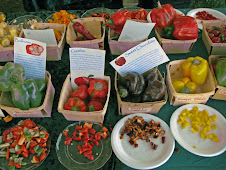LP_gardening_2666.jpg)
LP_gardening_2668.jpg)

LP_garden_2819.jpg)

LP_flower_0563.jpg)
LP_flower_0577.jpg)
LP_flower_0545.jpg)
LP_flower_0555.jpg)
LP_flower_0539.jpg)
LP_dog_0470.jpg)
LP_snow_0467.jpg)
LP_dog_0349.jpg)
LP_tree_8153.jpg)
LP_5028.jpg)
LP_flowers_3940.jpg)
LP-grass_0889.jpg)
LP_redfox_1651.jpg)
LP_squirrel_6978.jpg)
LP_flower_6936.jpg)
LP_squirrel_6864.jpg)
LP-deer_4773.jpg)
LP_4521.jpg)
LP_1251.jpg)
LP_4585.jpg)
LP_3784.jpg)
LP_3759.jpg)
LP_3811.jpg)
LP_3816.jpg)
LP_3847.jpg)
LP_0870.jpg)
LP_4183.jpg)
LP_0891.jpg)
LP_3175.jpg)
LP_3577.jpg)

LP_3068.jpg)
LP_3058.jpg)
LP_3562.jpg)
LP_0118.jpg)
LP_3407.jpg)
LP_3150.jpg)
LP_3011+(2).jpg)
LP_3020.jpg)
LP_2830.jpg)
LP_2782.jpg)
LP_2828.jpg)
LP_1746.jpg)
LP_2648.jpg)
LP_2666.jpg)
LP_2668.jpg)
LP_2493.jpg)
LP_2611crop.jpg)
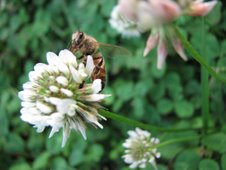
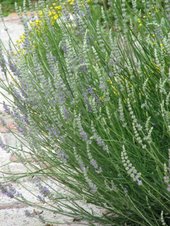
LP_2588.jpg)


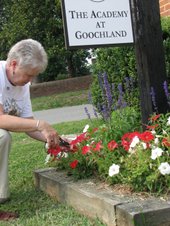


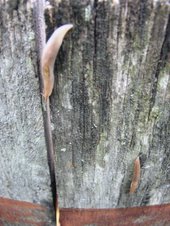
LP_2126.jpg)
LP_2122.jpg)
